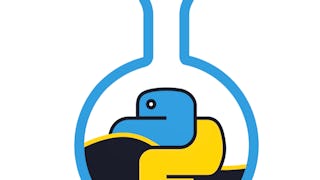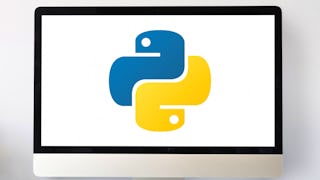Whether you’re a scientist, engineer, student, or industry professional working with data or quantitative tasks, this course is your gateway to solving real-world problems with Python. Designed for beginners, no prior programming experience is required. We start with the basics and build up to powerful tools and techniques used every day in research and industry. You’ll learn how to fit data to custom models, automate repetitive tasks, create clear and professional visualizations, work efficiently with arrays, solve optimization problems, integrate and differentiate mathematical functions, and more using essential libraries like NumPy and SciPy.


您将学到什么
Apply Python programming concepts to develop structured, efficient code for scientific analysis
Perform numerical and symbolic computations using Python libraries to solve real-world scientific problems
Visualize data effectively using Python’s plotting libraries
Select and apply appropriate Python tools and techniques to model, analyze, and solve scientific problems
您将获得的技能
要了解的详细信息

添加到您的领英档案
July 2025
4 项作业
了解顶级公司的员工如何掌握热门技能

该课程共有4个模块
This module lays the groundwork for using Python in scientific computing. You’ll get familiar with Python's syntax and basic concepts, including variables, data types, type conversions, and how to use Python as a powerful calculator. We’ll also introduce you to objects, methods, attributes, and basic plotting so you can begin working with data early in your journey.
涵盖的内容
14个视频1篇阅读材料1个作业1个编程作业1个讨论话题1个非评分实验室
Building on the basics, this module introduces programming logic and modular thinking. You’ll explore Python’s control flow tools—like loops and conditionals—and learn how to write reusable, well-structured functions. We’ll also discuss debugging strategies to help you troubleshoot your code more effectively.
涵盖的内容
11个视频1个作业1个编程作业1个非评分实验室
This module focuses on working with structured numerical data. You’ll learn how to manipulate arrays using NumPy, perform matrix operations, and fit mathematical models to data. You’ll also explore Python’s visualization capabilities to create effective 2D and 3D plots for scientific communication.
涵盖的内容
8个视频1个作业1个编程作业1个非评分实验室
In this final module, you’ll explore powerful numerical and symbolic tools in Python. Topics include solving equations, optimization, curve fitting, and numerical integration. These skills are essential for tackling complex scientific problems and performing high-level data analysis.
涵盖的内容
9个视频1个作业1个编程作业1个非评分实验室
从 Data Analysis 浏览更多内容
 状态:预览
状态:预览Ball State University
 状态:预览
状态:预览Imperial College London
 状态:免费试用
状态:免费试用Google
人们为什么选择 Coursera 来帮助自己实现职业发展




学生评论
13 条评论
- 5 stars
92.85%
- 4 stars
7.14%
- 3 stars
0%
- 2 stars
0%
- 1 star
0%
显示 3/13 个
已于 Aug 24, 2025审阅
Fascinating topic. Presented well. Easy to follow.
已于 Nov 8, 2025审阅
Very good course for optimization basics understanding. I would request you to please make a course on computational biology and chemistry. It would be really amazing!!!
已于 Sep 23, 2025审阅
Excellent overview, introducing a wide range of modules and functions for scientific computing. Very clear tuition. Jupyter Notebooks are an excellent resource.
常见问题
To access the course materials, assignments and to earn a Certificate, you will need to purchase the Certificate experience when you enroll in a course. You can try a Free Trial instead, or apply for Financial Aid. The course may offer 'Full Course, No Certificate' instead. This option lets you see all course materials, submit required assessments, and get a final grade. This also means that you will not be able to purchase a Certificate experience.
When you purchase a Certificate you get access to all course materials, including graded assignments. Upon completing the course, your electronic Certificate will be added to your Accomplishments page - from there, you can print your Certificate or add it to your LinkedIn profile.
Yes. In select learning programs, you can apply for financial aid or a scholarship if you can’t afford the enrollment fee. If fin aid or scholarship is available for your learning program selection, you’ll find a link to apply on the description page.
更多问题
提供助学金,






